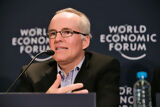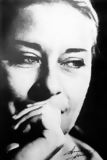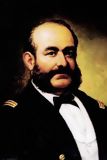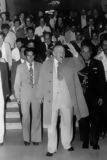
The AIgorythm project

Playwright and actor

Novelist

Writer and poet

Volleyball player

Italian-Peruvian naturalist and geographer

Singer and percussionist

Last Inca emperor

Politician, former prime Minister

Journalist and TV host

Poet

Inca warrior

Actor and comedian

Biophysicist

Poet

Doctor and researcher

Businessman, Interbank group

Journalist and writer

Poet and writer

Singer and songwriter

Writer

Film director, Berlin Golden Bear winner

Football player

Writer and journalist

Doctor and scientist

Photograph

Chess player

Industrialist

Former general

Specialist in public health

Actress and singer

Afro-Peruvian music singer

Mathematician and engineer

Indigenous chronicler

Neurologist and anthropologist

Painter

Football player

National hero, military leader

Intellectual and reformer

Chef and entrepreneur

Fashion designer

Singer-songwriter

TV presenter

Marathon runner

Indigenous Peruvian chronicler

Theologian

Former national team captain

Economist and former health minister

Inca princess

Writer and television host

Folk musician

Poet and guerrilla

Former UN secretary-general

Chef, known for fusion cuisine

Football player

Peruvian aviation pioneer

Poet and artist

Marxist philosopher and writer

Industrialist and businessman

Novelist and ethnologist

Painter and muralist

Opera tenor

Fashion designer

Cardinal of Lima

Peruvian tennis player

Football coach

Leader of the indigenous rebellion

Military hero

Latin singer

War of the Pacific hero

The youngest mother in history

Politician

Creole music singer

Tennis player

Musician

Writer and politician

Politician and founder of the Christian Democratic Party

Founder of Sodalitium Christianae Vitae

Archaeologist and anthropologist

Military leader and politician

Television host

Actress and singer

Contemporary sculptor

Women’s rights activist

Beauty queen

Astrophysicist

Heroine of independence

Mathematician and archaeologist

Historian and anthropologist

Military figure and historical figure

Fashion photographer

Writer, Nobel Prize in Literature, Politician

Revolutionary leader

Environmental activist

Leader of the indigenous rebellion

Musician from Gaia band

War hero

Military leader and politician

Chef, known for Nikkei cuisine

Volleyball coach and former player

Environmental activist

Television personality

Writer

Football player

Epidemiologist and former health Minister

Inventor and aerospace pioneer

Soldier and inventor

Rock singer

Chef and co-owner of Central restaurant

Painter

Football player

TV presenter and actress

Actor

Writer and historian

Journalist and lawyer

Archaeologist, founder of Caral site

Monk and Saint

Saint, patron of Latin America

Physicist and engineer

World champion surfer

Actress

Oncologist

Singer, Latin Grammy winner

Former mayor of Lima

Singer

Actress

Former football player

Painter

Former football player

Painter

Inca leader

Archbishop, saint

Leader of the indigenous rebellion

Revolutionary indigenous leader

Diplomat and intellectual

Sculptor and painter

Political leader, founder of APRA

Lawyer and Former prime minister

Chef of Central restaurant

Former head of secret services

Popular singer

Fashion designer

Exotic music singer
Margarita Checa is a renowned Peruvian sculptor, born in Lima in 1950, primarily known for her wooden sculptures that explore spiritual, human, and mythological themes. Her work is widely appreciated both in Peru and internationally. Her unique focus on the representation of the human figure, with an emphasis on emotional expression and spirituality, has established her as one of the most influential sculptors in Latin America today. Checa has worked with various materials, but she is mainly recognized for her imposing wooden sculptures, where she captures the human essence through simple yet powerful forms.
Margarita Checa studied at the Pontificia Universidad Católica del Perú under the direction of Anna Maccagno. She later entered the workshop of Cristina Gálvez and stayed with her until the end of her training. Throughout her education, she was inspired by human nature, history, and the spiritual traditions of various cultures. She spent almost a year and a half in Europe, mainly in London, which allowed her to have direct contact with the works of great sculptors and learn from contemporary trends that would influence her later work.
During her education, Checa was drawn to wood sculpture, a material she describes as alive and full of history. This medium allowed her to explore deep themes about the human condition, mortality, and spirituality, and soon became her material of choice. Throughout her career, wood has been a recurring element in her works, ranging from detailed human figures to abstract forms evoking ancient myths and symbols.
Margarita Checa's style is unmistakable. Her sculptures often have a strong spiritual and emotional component, giving them a depth that goes beyond mere physical representation. Her works often focus on the human figure, especially women, exploring themes such as vulnerability, strength, motherhood, and the connection between body and spirit. Through her minimalist approach, she manages to convey complex emotions using simple lines and smooth surfaces, giving her sculptures an air of timelessness.
Checa has also incorporated influences from Andean artistic traditions and other pre-Columbian cultures into her work, combining them with modern and universal elements. Her work not only reflects the richness of Peruvian culture but also a broader search for understanding humanity through art. This approach sets her apart in the contemporary art scene, as she combines the ancient with the modern, creating a dialogue between the past and the present.
Throughout her career, Margarita Checa has exhibited her work in numerous galleries and museums around the world. She has participated in solo and group exhibitions in Spain, the United States, and Panama, consolidating her international reputation. Although her work has not been exhibited at the Museum of Contemporary Art in Lima, she had a significant retrospective at the Icpna (Instituto Cultural Peruano Norteamericano), and her sculptures have been exhibited at the Museum of Women in Los Angeles, as well as in galleries in New York, Knoxville, Chicago, Los Angeles, Santa Monica, and other cities.
Checa has been recognized with various awards and honors for her contribution to contemporary art. Among her most notable achievements is her participation in international biennials and the growing demand for her works in private and public collections. The emotional and spiritual strength of her sculptures has captured the attention of collectors around the world, allowing her to establish herself as one of the most important sculptors of her generation.
The primary material of Margarita Checa's work is wood, although she has also experimented with other materials such as bronze and marble. However, it is wood that has defined her unique style. Checa personally selects the logs and blocks of wood she will use, often preferring local woods such as cedar. Each piece is hand-carved, with meticulous attention to detail and texture. Through a laborious process, Checa shapes the wood to create human figures and abstract forms that seem to come to life as the wood reveals its history.
In addition to wood, Checa has worked in other media, such as metal, especially in large-format sculptures found in public spaces. Despite exploring other materials, her work in wood remains the most emblematic and best reflects her artistic vision. Her artisanal approach and respect for the natural material are essential to understanding the symbiotic relationship she has with her medium.
The impact of Margarita Checa on contemporary Peruvian and Latin American art is undeniable. Through her work, she has established a bridge between tradition and modernity and paved the way for a new generation of sculptors interested in exploring spirituality and humanity from an introspective perspective. Checa has inspired young artists to look beyond conventional forms and find their own artistic voice.
Her work has also helped position Peruvian sculpture on the international stage, showing that contemporary art from Peru can engage with global trends without losing its identity. In this sense, Margarita Checa has managed to not only establish herself as a key figure in contemporary sculpture but also as a cultural ambassador for her country.
Margarita Checa is one of the most influential sculptors in Peru, and her work continues to be admired for its ability to capture the human essence in forms that are both physical and spiritual. Through her sculptures, she has managed to establish an artistic language that transcends borders and cultures, and her legacy in Peruvian and Latin American art continues to grow. Checa remains a source of inspiration for artists and art lovers around the world, and her dedication to exploring the human condition through sculpture keeps her in a prominent position on the international art scene.